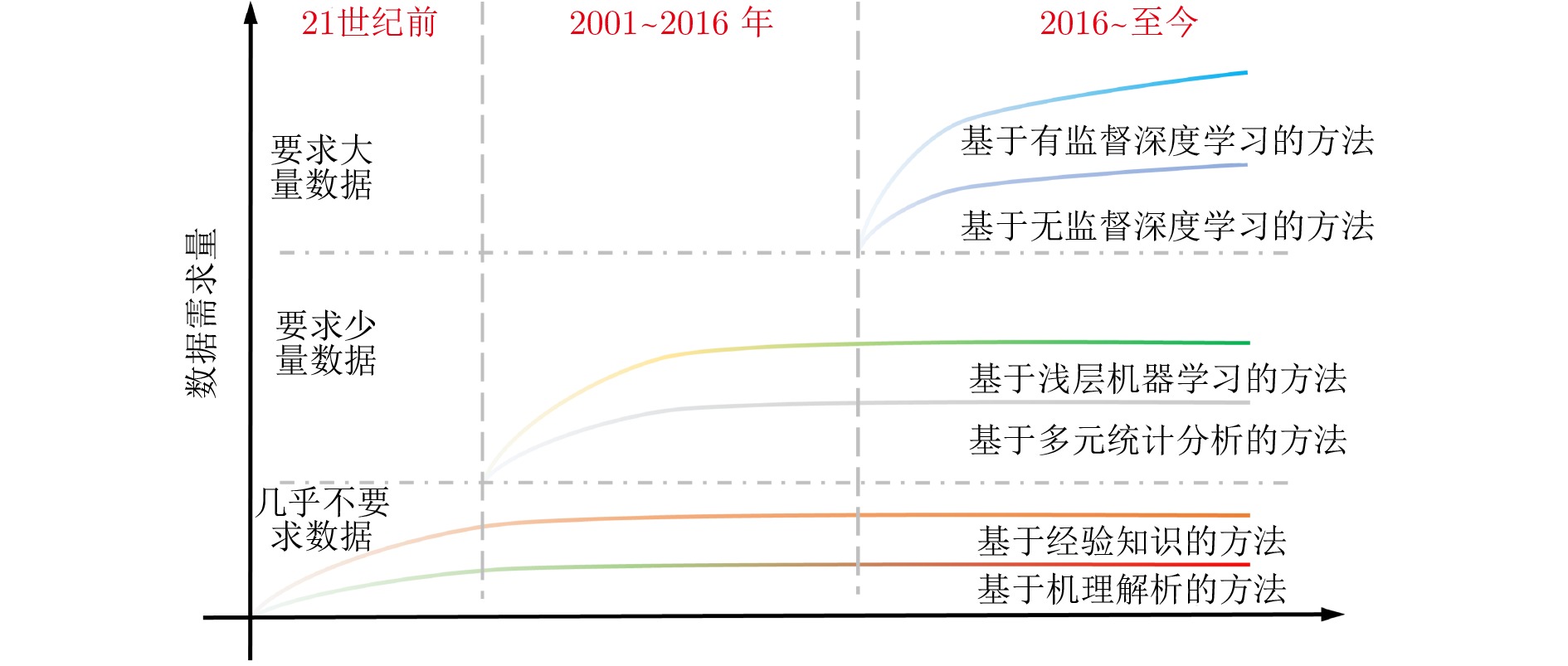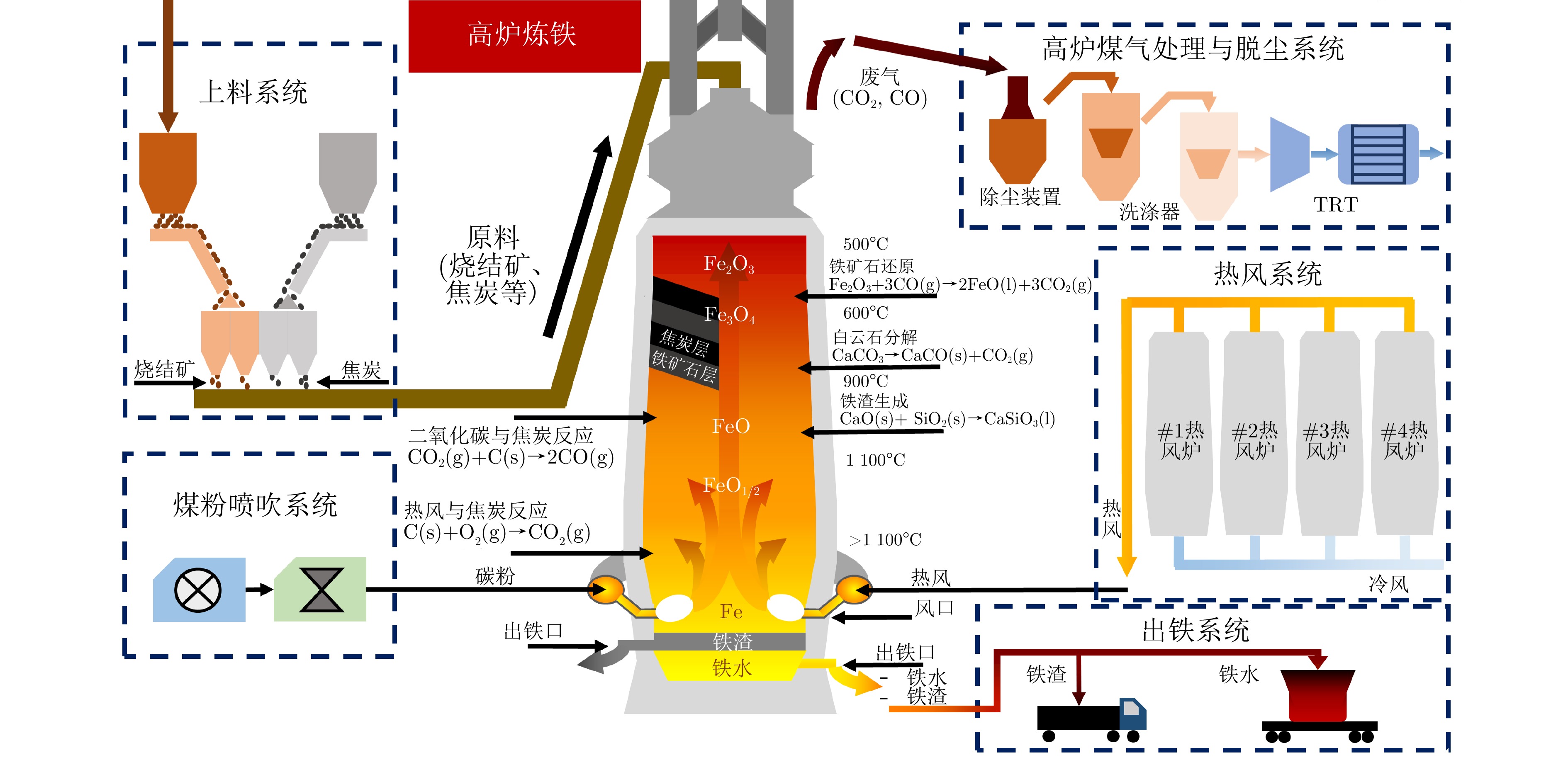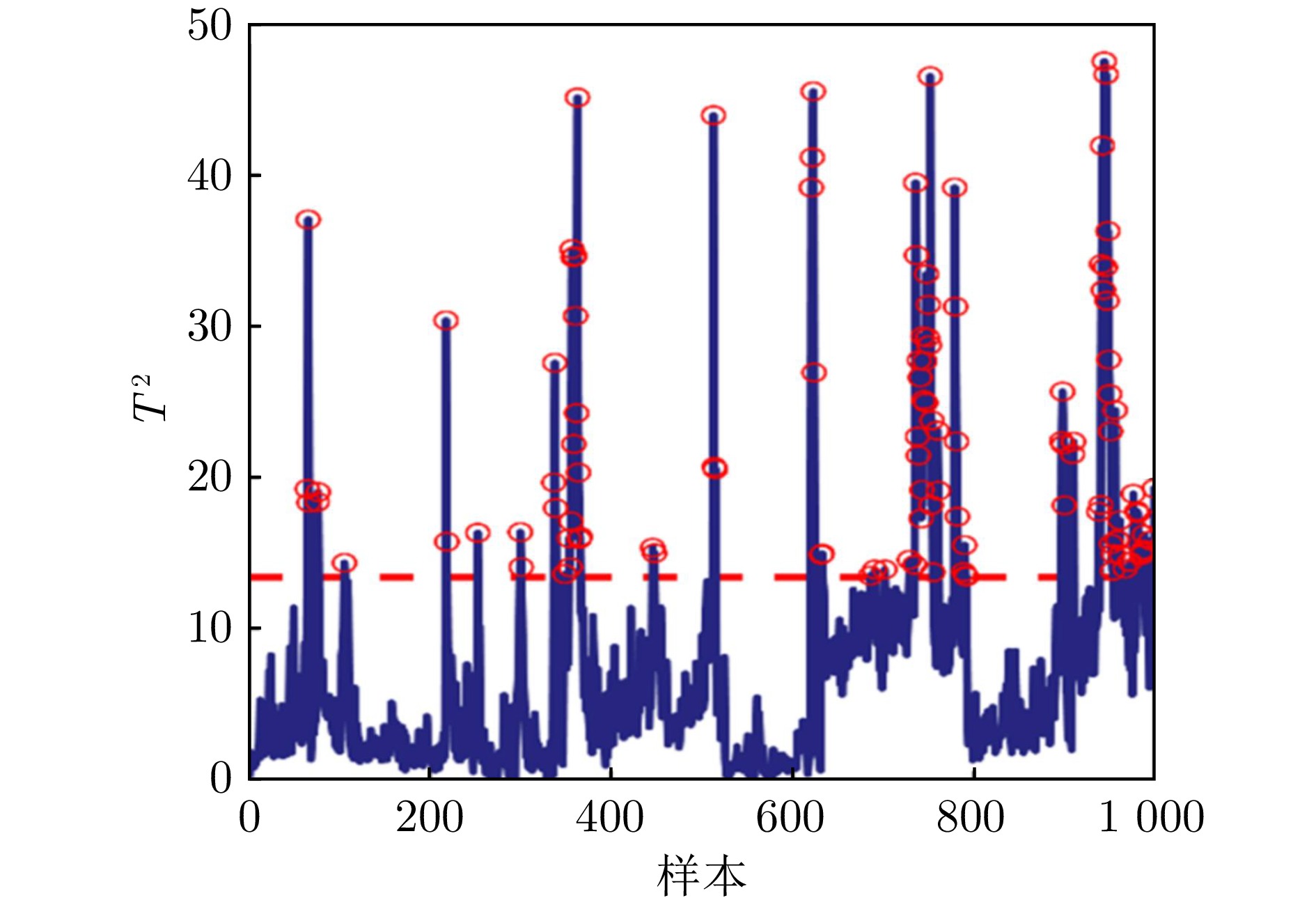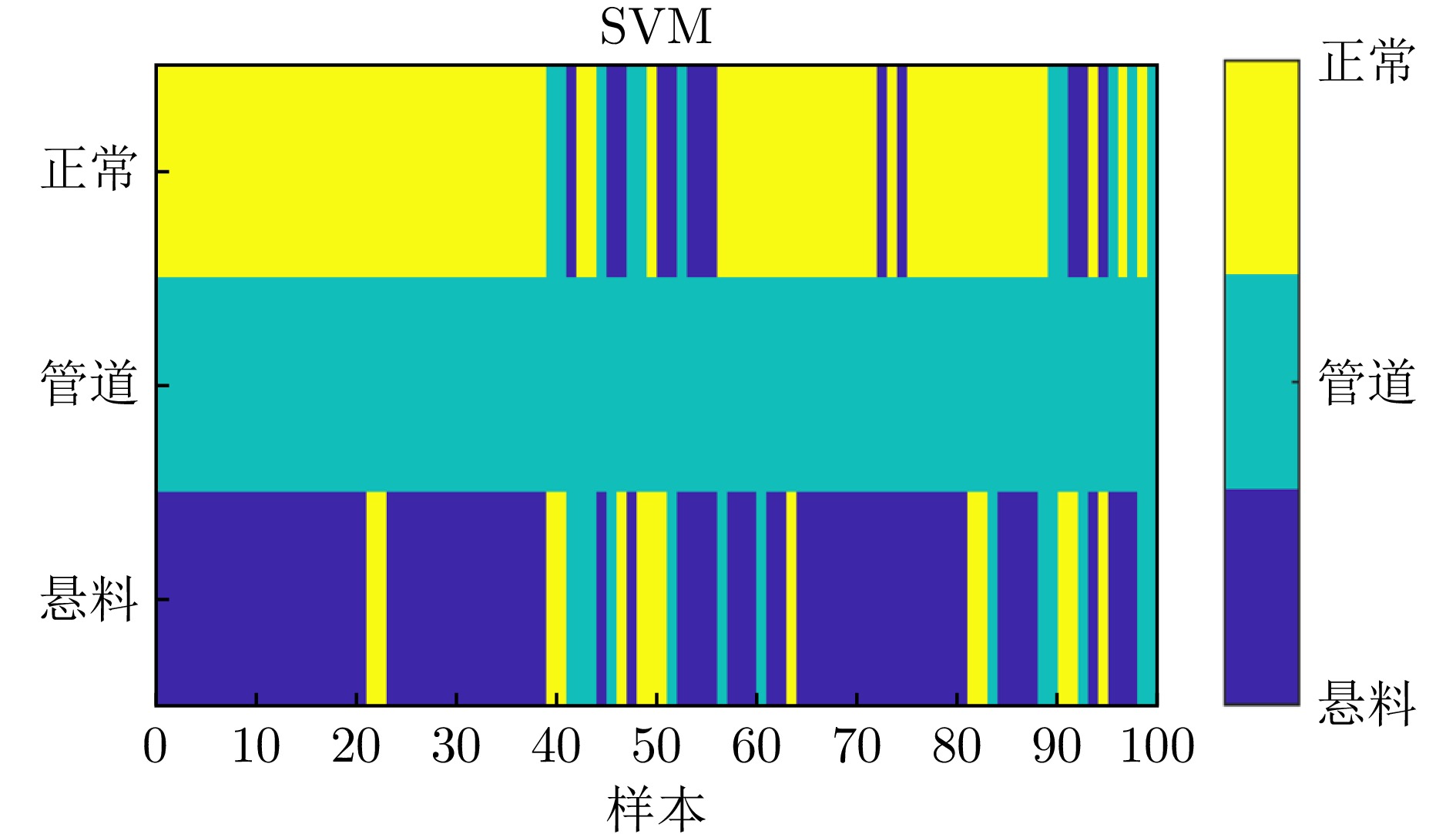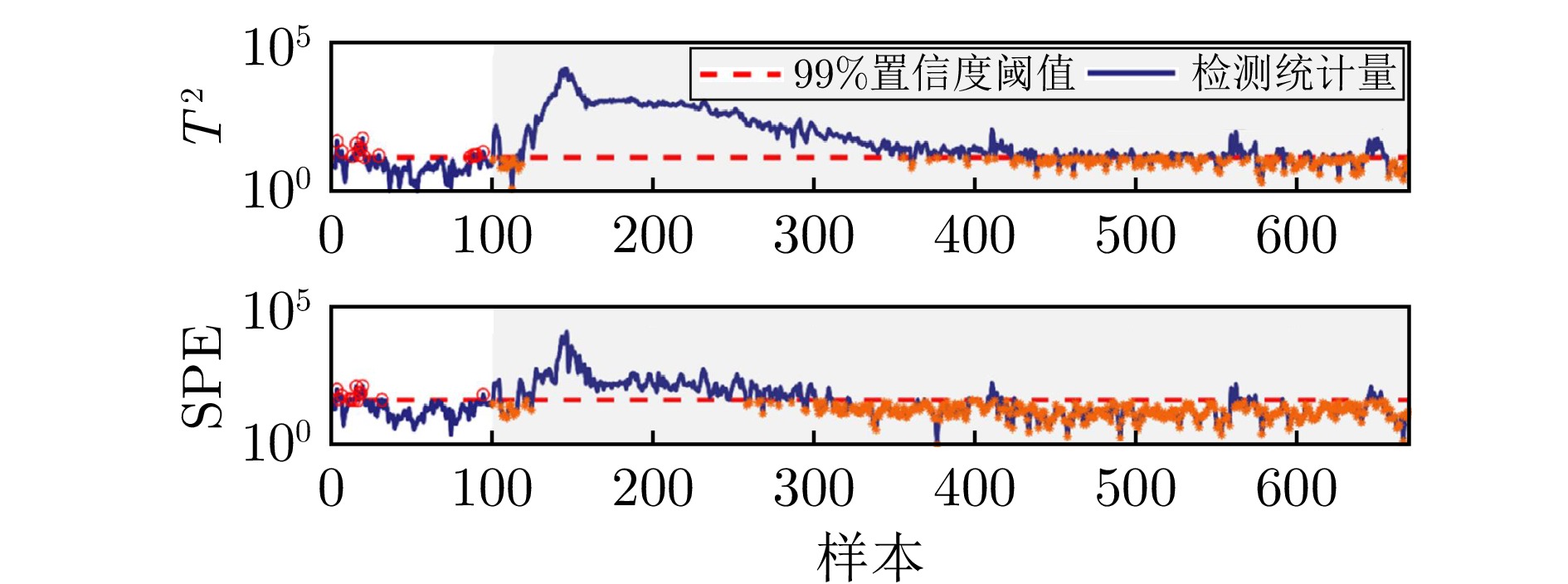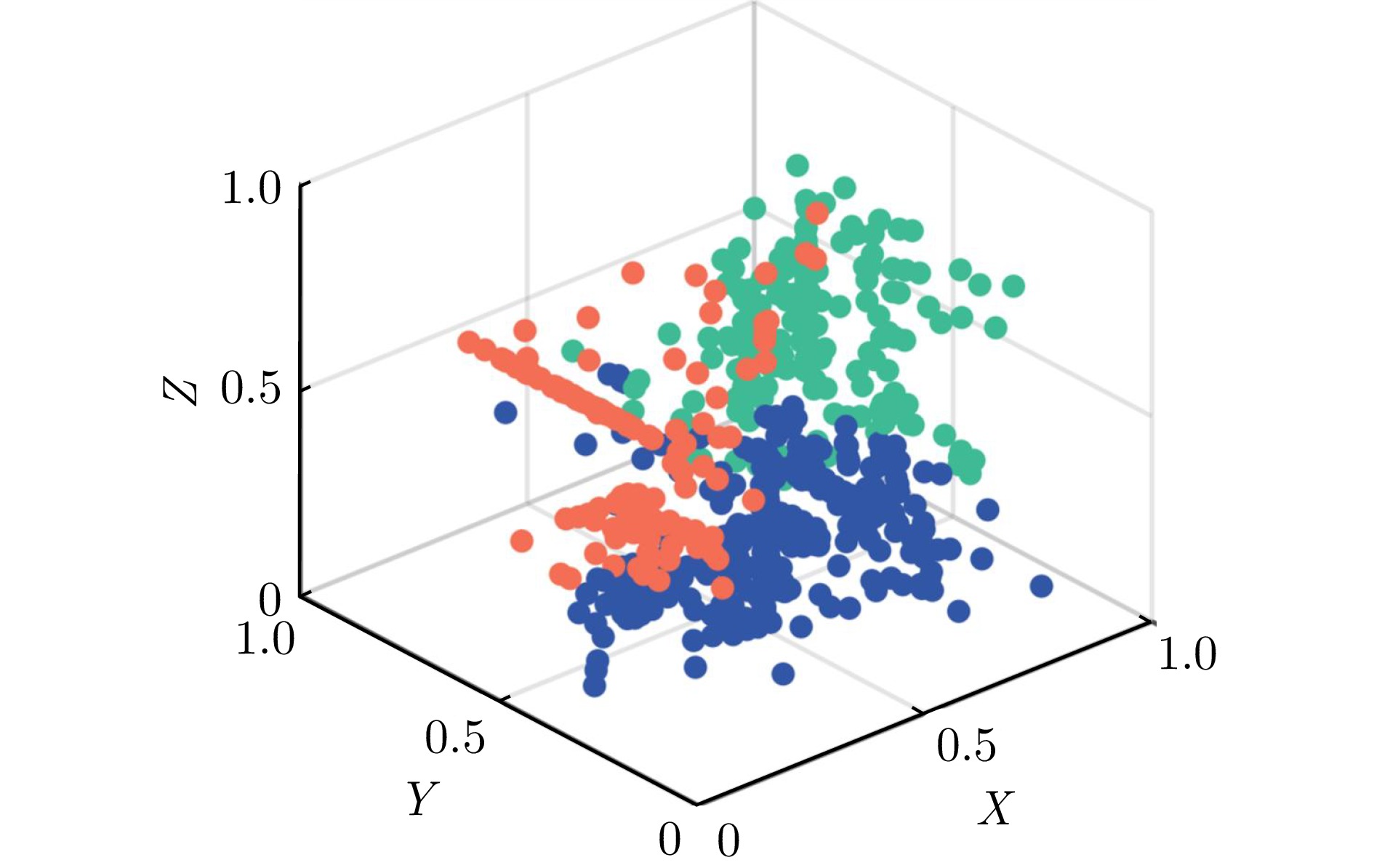Review of Fault Detection and Diagnosis Research in Blast Furnace Ironmaking Process: Retrospective, Status, and Prospects
-
摘要: 高炉炼铁过程是钢铁冶炼制造中能耗最大、成本最高、排放最多的核心环节, 其能耗、成本约占钢铁流程的70%, 而碳排放占总排放的近80%, 其平稳生产决定着整个钢铁制造流程的生产水平. 为此, 高效的高炉炼铁过程故障检测与诊断, 是保障钢铁制造流程生产的有效手段, 也是近年业界与学界的研究热点. 立足于该领域的未来发展需求, 本研究首先总结国内外研究现状, 着重于近20年来数据驱动方法在高炉炼铁过程故障检测与诊断; 其次, 按照数据量需求, 阐述并分析了不同技术方法基本思想、优势与不足, 并分类概述了最新技术进展; 最后, 提出未来发展趋势展望, 以期对高炉炼铁过程故障检测与诊断的发展提供参考.Abstract: Blast furnace ironmaking process (BFIP) is the most energy-intensive, costly, and emission-heavy core component of steel manufacturing, accounting for approximately 70% of energy consumption and costs in the steelmaking process, while carbon emissions make up nearly 80% of total emissions. The stable operation of BFIP is critical for overall production efficiency in steel manufacturing. Therefore, effective fault detection and diagnosis in the BFIP are essential for ensuring smooth production and are critical areas of research for enhancing operational performance. To address future development needs in this field, this study first summarizes past research, both domestically and internationally, focusing on data-driven methods for fault detection and diagnosis over the last 20 years. It then examines these methods' fundamental concepts, advantages, and limitations based on data requirements and various technical approaches, providing a categorized overview of recent technological advancements. Finally, the study outlines future trends to serve as a reference for the ongoing development of fault detection and diagnosis in the BFIP.
-
表 1 基于多元统计分析的高炉炼铁故障检测方法对比
Table 1 Comparison of blast furnace ironmaking fault detection methods using multivariate statistical analysis
方法 优势 不足 PCA 专注于方差信息, 降维能力强, 计算效率高 对过程噪声敏感, 容易忽视微小故障的发生 PLS 对共线性问题具有鲁棒性, 回归能力强 隐变量排序无明确标准, 容易获得虚假的回归关系 CVA 能揭示变量间的时序关系, 可解释性强 受到协方差逆运算的影响, 无法处理共线性数据 SSA 能够处理非平稳数据, 识别数据中平稳模式 对数据长度要求较高, 模型参数选择困难 表 2 基于浅层机器学习的高炉炼铁故障诊断方法对比
Table 2 Comparison of shallow machine learning based fault diagnosis methods for blast furnace ironmaking
方法 优势 不足 SVM 泛化能力强, 无需先验知识, 具有一定鲁棒性 对核参数与训练样本的选择敏感, 可解释能力不足 图方法 能刻画复杂变量关联, 有一定鲁棒性, 能集成异构数据 优化复杂度高, 需要先验知识辅助, 结构难以直观解释 表 3 基于无监督深度学习的高炉炼铁故障检测方法对比
Table 3 Comparison of unsupervised deep learning based fault detection methods for BFIP
方法 优势 不足 AE 有效处理高维数据, 检测异常准确 对时序信息不敏感, 依赖网络结构和重构误差 GRU 擅长捕捉时间序列中的动态变化 训练复杂, 易过拟合, 对数据质量要求高 表 4 基于有监督深度学习的高炉炼铁故障诊断方法对比
Table 4 Comparison of supervised learning based fault diagnosis methods for BFIP
方法 优势 不足 GAN 特征学习能力强, 可有效增强数据集 训练不稳定, 模式易崩溃, 可解释性差 TL 泛化能力强, 加速训练, 易解释性 领域适应困难, 标签依赖, 知识迁移限制 表 5 数据驱动的高炉炼铁过程故障检测与诊断文献总结与分析
Table 5 Summary and analysis of literature on data-driven fault detection and diagnosis in BFIP
方法 文献 优点 缺点 适用场景 基于PCA的
故障检测方法TS-PCA[33] 无需过程和故障先验知识, 有效去除离群值干扰 对非线性问题效果有限, 需要较大的数据集支持 适用于高炉炼铁过程周期性热风炉切换等过程波动频繁的场景 RPCP[34] 分离数据次要故障和重要信息, 提取低秩矩阵揭示显式变量关系 对高噪声数据的鲁棒性不足, 计算复杂度高 适用于需要区分故障程度的场景, 比如高炉炉料堆积的程度 KSRC[35] 处理非线性多模态过程, 使用稀疏回归捕获样本间的关系 对噪声较高或模式数未知的系统效果不佳 适用于非线性、多模态且存在多工况切换的多变量高炉炼铁过程 PCA-ICA[36] 综合考虑高炉数据的高斯和非高斯特性 算法计算量大, 依赖高质量的工业数据 适用于高炉管道堵塞等数据分布复杂的高炉异常检测 GDPCA-GMM[37] 处理共线性和非高斯分布, 提取动态特性, 减少噪声引入 算法复杂度较高, 模型适应性受限 适用于变量波动频繁且存在非高斯分布的场景, 例如高炉悬料故障检测 PCA-LMNN[38] 解决故障数据不足, 提取故障特征不受操作点和不同高炉影响 对全新故障的分类效果较差, 依赖历史数据的质量和覆盖范围 适用于历史故障数据有限但需分类的高炉细微故障诊断场景 基于PLS的
故障检测方法KPLS[40] 处理非线性强、故障样本少的过程监控 对参数选择较为敏感 适用于炉料或者炉温波动等高炉质量监控和故障变量识别 IKOPLS[41] 去除噪声, 明确子空间与铁水质量的关联性, 区分故障相关性 模型适用性受数据影响, 参数选择和模型调整较为敏感 适用于高炉炼铁过程中需区分质量相关和质量无关故障的场景 基于CVA的
故障检测方法CDCCA[42] 实现不均匀采样数据的双层动态过程监控 对快速动态变化响应滞后, 对高噪声数据的鲁棒性有限 适用于处理铁水成分等数据采样频率低且不规则的变量 CVA-SVDD[43] 处理非线性和非高斯分布数据, 利用数据拟合超球半径作为健康指标监测直观 对超参数和模型训练数据的质量依赖较高 适用于动态过程数据复杂且非高斯分布数据异常的高炉异常检测 SFICVA[44] 提取故障相关和无关子空间, 结合贝叶斯推理整合多故障信息 模型构建过程复杂, 对参数选择要求较高 适用于不显著高炉故障检测, 尤其是炉墙结厚等渐进性故障 JS-DDKCVA[45] 在典型变量空间内提取动态非线性信息, 引入联合稀疏约束消除冗余非线性关系 算法复杂度高, 计算资源需求较大, 参数选择和模型优化较为复杂 适用于非线性、动态特性强且需异常检测的工业过程场景 M2KCSVA[46] 分析时间相关性和弱平稳性, 提取动态和静态平稳信息, 提供直观解释统计量 对参数选择较为敏感, 模型调优过程复杂 适用于动态、非线性和非平稳数据的场景 RBNRCVA[47] 引入鲁棒深度自编码器, 使得模型可以自适应提取深层特征 需要确定的参数较多, 对参数选择较为敏感 适用于炉料波动或布料不均导致的复杂故障情况 基于SSA的
故障检测方法Tc-GLNASSA[48] 捕获全局与局部非线性特性, 引入时间约束, 提升对周期性非平稳的识别能力 参数选择较敏感, 依赖经验调整, 计算成本高 适用于具有周期性非平稳性和非线性特性的高炉实时监控场景 Local-DBKSSA[49] 捕获动态非线性特性, 提取平稳子空间估计投影, 提升对时间变化数据的监测 对全新故障模式鲁棒性受限, 计算资源需求较大 适用于炉墙结厚等长时序积累故障的检测场景 WDSSA[50,51,52] 处理非平稳特性数据, 可有效识别热风炉切换时间并减少由其引发的误报 对参数选择和分布估计的准确性要求较高 适用于因炉料波动和生产调整导致数据非平稳的高炉异常检测 DiASSA[53] 实现动态、静态和非平稳成分分离, 采用迭代建模算法隔离动态和静态信息 模型复杂度高, 模型调优过程较复杂 适用于动态、非平稳和混合特性显著的故障监控场景 其他多元统计
分析方法FLML[54] 挖掘局部结构信息, 提升数据特征提取能力和监控性能 对于非线性问题效果具有局限性 适用于需捕获多维局部结构的故障监控场景 ILPP[55] 提高在线更新效率, 有效跟踪时间变化特性并捕捉过程故障 对高频数据更新效果有限, 对参数选择和初始邻域结构敏感 适用于动态环境中需低延迟、高效在线监测场景 KF-PDC[56] 精确定位异常并减少变量冗余, 在线IACE分析因果关系 对参数设置和滑动窗口长度较为敏感, 依赖高质量数据 适用分析高炉炼铁异常传播路径并捕获多模式特性的监测场景 TOPSIS-GT-MSPC[57] 结合TOPSIS和灰色模型, CV指标融合T2和预测误差, 实现综合检测 模型复杂度较高, 训练和调试过程较繁琐 适用于需实现早期预警和降低生产风险的工业监控场景 CTFA[58] 处理非平稳过程数据, 通过趋势方向和幅度实现异常检测, 基于局部学习适应时间变化的控制限 对参数调整和趋势特征提取的初始选择较为敏感 高炉炼铁中原料质量波动大、动态操作频繁的非平稳过程监控场景 RTCSA[59] 使用变量增量减少时间变化影响, 指标切换方案增强对过程动态变化的适应性 对噪声较大的数据表现可能不足, 依赖高质量的变量增量数据 适用于需检测早期异常并排除热风炉切换干扰的监控场景 RLFDA[60] 利用随机特征映射显著降低计算成本, 提取局部结构信息, 提升非线性特性的故障诊断性能 模型对数据质量和分布依赖较强, 可能对高噪声数据鲁棒性不足 适用于非线性特性显著, 需从局部结构中提取特征的高炉过程实时监控 Improved binary tree SVM[61] 通过定义类别间的相似性优化了多分类诊断方法 在样本关系不明确时难以确定相似性 适用于具有明确类间关系的工业系统在线预测 基于SVM的
故障检测方法SVM-RLL[62] 能结合低秩学习提升SVM的鲁棒性 处理高维数据时性能受限 适用于炉料波动、热风炉切换等伴随显著噪声干扰的多分类问题 Improved SVM[63] 提出一种SVM的缩减策略提高诊断效率 模型性能受样本规模和类间差异的影响 适用于应对高炉炼铁数据的高维特性 CC-LS-SVM[64] 通过离散粒子群优化和成本意识惩罚提升模型的诊断速度和分类精度 在面对大规模或复杂数据时性能受限 适用于对实时性和准确性要求高的少样本工业场景 OSVM[65] 引入低秩学习提升模型多分类问题的解决效率 处理变量非线性关系时可能受限制 适用于故障数据少且分布不均的高炉过程检测 GBCPDM[67] 结合欧式距离和马氏距离计算权重, 考虑了变量关系, 从而更好地处理非高斯和非线性数据 处理大规模数据时计算效率低 适用于高炉变量间数据关系复杂、需要检测故障变化点的工业场景 PGM[68] 利用数据和知识构建概率图模型, 能有效定位故障变量. 同时, 不依赖于特定分布假设, 适用于多种数据分布情况 难以应对工业过程动态变化频繁、数据分布快速变化的工业场景 适用于炉料质量波动等数据分布未知或非高斯分布的工业过程 基于图模型的
故障检测方法ASPM[69] 采用不对称Sparsemax驱动的因果图建模, 通过故障前因果图实现根因诊断, 减少故障后样本积累的时间延迟 依赖高质量数据和准确的因果图构建, 对未知因果关系的适应性可能不足 适用于探索高炉数据动态变化且需高效根因诊断的场景 OGMKG[70] 引入本体指导构建多级知识图谱, 增强语义表达能力, 多信息融合的图嵌入框架提供全面特征表示 知识图谱构建和更新过程复杂, 需大量领域知识支持, 对新知识或动态变化的工业场景适应性可能不足 适用于涉及故障诊断、自愈控制且需快速响应和高鲁棒性的高炉炼铁过程 KEGNN[71] 能克服高炉非平稳性、大时滞和小样本故障数据建模困难, 通过自适应两尺度序列划分和先验知识改进诊断模型 未考虑数据库中未出现的故障, 且使用离散节点构建贝叶斯网络, 限制了模型对连续数据的处理能力 适用于具有非平稳、大时滞特性的高炉复杂故障诊断 PGCN[72] 能利用网络剪枝优化结构, 提高训练效率 难以处理大规模的工业数据 适用于现实中难以收集大量标签样本的场景 MDGCN[73] 为时间节点分配不同权重, 聚合过程数据动态信息. 采用多通道策略从不同层次学习特征, 增强模型表示学习能力 模型训练时间较长, 计算成本较高 适用于对实时性要求相对不高、但对诊断准确性和鲁棒性要求较高的工业故障诊断场景 KB-TGCN[74] 构建基于知识的图结构, 嵌入时间信息提取器, 捕捉时空信息, 焦点损失函数结合数据平衡因子, 缓解数据不平衡问题 需高质量的先验知识构建图结构, 对未知变量关系的适应性可能不足 适用于数据复杂, 动态性强, 且需要高精准度的故障监测场景 VS-MWHMM[75,76] 利用滑窗实现故障的早期诊断 处理模式频繁切换、类间差异小的工业过程时性能受限 适用于炉料堆积和悬料等复杂多变量动态故障
基于AE的
故障检测方法SDAE[77] 提高复杂非线性数据的故障检测能力, 鲁棒性较强 模型训练时间较长, 对计算资源需求较高 适用于炉墙结厚引起透气性异常等强干扰和复杂非线性的故障检测 SDTDAE[78] 提取与故障相关的高层次特征, 动态因素描述样本与目标间的关系, 增强监测能力 依赖大量高质量数据完成训练, 对参数设置较为敏感 适用于悬料等需捕获动态关联关系的故障 SSDASC[79] 处理噪声污染数据并提取内在特征, 具有高自适应性和鲁棒性 模型训练复杂, 计算时间和资源需求较高 适用于噪声干扰显著且需鲁棒故障识别的复杂工业过程
基于GRU的
故障检测方法GRU-SVDD[80] 处理过程动态特性, 结构简单, 参数较少, 能定位故障来源 对噪声较大数据和全新故障模式鲁棒性不足 适用于动态复杂、数据非线性的高炉过程场景 IDC-GRU[81] 捕捉多变量间的隐式非线性关系, 提供可解释性强的变量关系图, 增强模型透明度 训练和部署过程较为复杂, 适合资源较充足的环境 适用于捕捉炉顶煤气分布异常与透气性恶化之间的潜在关系 GRU-GMM-AE[82] 自适应捕获数据的非线性动态特性, 引入潜变量方差约束, 增强信息提取能力 对参数选择较敏感 适用于数据动态复杂、无标签且对实时性要求低的高炉监测场景 MOCR-LSTM-MVPCA[83] 结合多物料层重建和LSTM, 准确估算炉喉温度, 基于特征分析提升诊断性能 适用于较大温度偏差或漂移速率, 检测小偏差可能效果有限 适用于温度偏差较大或漂移速率显著时需快速诊断故障的高炉过程 WDCNN[84] 利用宽核自动筛选高炉数据中的无效特征, 并结合小卷积核与多层时序网络模型提取关键时序特征 模型的鲁棒性和泛化能力在不同工况和设备类型下可能会有所不同 适用于具有不同数据复杂度的高炉过程 基于GAN的
故障检测方法GAN[85] 能结合先验知识与神经网络生成故障数据, 提升小样本分类准确性 依赖于先验知识, 且未考虑多故障关联 适用于炉温波动和管道等小样本、数据不均衡的稀有故障诊断 CGAN[86] 通过多种技术生成虚拟样本解决小样本问题, 利用科学筛选机制保证样本质量 计算复杂度高, 缺乏动态适应性 适用于悬料等复杂故障的小样本诊断 MBIEGAN[87] 能改进生成器输入提升训练效果, 并利用多种策略提高对多种故障的检测能力 训练稳定性差, 参数设置复杂 适用于如炉料堆积逐步加重等动态故障检测 基于TL的
故障检测方法DWJDAN[24] 能有效处理无标签数据 依赖源域数据质量, 且增加了计算成本 适用于故障数据分布波动大且有未标注数据的高炉跨设备故障诊断 MMEC[90] 能提升弱分类器性能, 学习判别特征 无法处理未知故障, 且性能受参数设置影响大 适用于故障样本少且存在弱分类器迁移问题的高炉诊断场景 IMDAwFF[91] 提取多样化特征并融合全局与局部信息, 处理不完全多源领域适配问题, 弥补类别空间不一致的限制 模型训练过程复杂, 部署难度较高 适用于多源数据分布变化频繁且需融合特征的故障诊断场景 -
[1] 李彦瑞, 杨春节, 张瀚文, 等. 流程工业数字孪生关键技术探讨. 自动化学报, 2021, 47(03): 501−514Li Y, Yang C, Zhang H., et al. Discussion on key technologies of digital twin in process industry. Acta Automatica Sinica, 2021, 47(03): 501−514 [2] 蒋珂, 蒋朝辉, 谢永芳, 等. 基于动态注意力深度迁移网络的高炉铁水硅含量在线预测方法. 自动化学报, 2023, 49(05): 949−963Jiang K, Jiang Z, Xie Y, et al. Online prediction method for silicon content of molten iron in blast furnace based on dynamic attention deep transfer network. Acta Automatica Sinica, 2023, 49(05): 949−963 [3] 温亮, 周平. 基于多参数灵敏度分析与遗传优化的铁水质量无模型自适应控制. 自动化学报, 2021, 47(11): 2600−2613Wen L, Zhou P. Model free adaptive control of molten iron quality based on multi-parameter sensitivity analysis and GA optimization. Acta Automatica Sinica, 2021, 47(11): 2600−2613 [4] 李温鹏, 周平. 高炉铁水质量鲁棒正则化随机权神经网络建模. 自动化学报, 2020, 46(04): 721−733Li J P, Zhou P. Robust regularized RVFLNs modeling of molten iron quality in blast furnace ironmaking. Acta Automatica Sinica, 2020, 46(04): 721−733 [5] 中国钢铁工业协会. 2022年钢铁行业经济运行报告. 2023-06-05.China Iron and Steel Industry Association. Steel industry economic operation report 2022. 2023-06-05. [6] 世界钢铁协会. 世界钢铁统计数据. 2022-04-30.World Steel Association. World Steel Statistics. 2022-04-30. [7] 安剑奇, 吴敏, 何勇, 等. 基于分层递阶融合算法的高炉料面煤气流分布软测量方法. 自动化学报, 2011, 37(04): 496−502 doi: 10.3724/SP.J.1004.2011.00496An J, Wu M., He Y, et al. Soft-sensing method of gas flow distribution of blast furnace burden surface based on multi-level hierarchical fusion algorithm. Acta Automatica Sinica, 2011, 37(04): 496−502 doi: 10.3724/SP.J.1004.2011.00496 [8] Ishimaru K, Konishi M, Imai J, et al. Application of Sequential Quadratic Programming Method to Temperature Distribution Control in Reactor Furnace. ISIJ International, 2005, 45(3): 347−355 doi: 10.2355/isijinternational.45.347 [9] Wei J, Chen X. Blast Furnace Gas Flow Strength Prediction Using FMCW Radar. ISIJ International, 2015, 55(3): 600−604 doi: 10.2355/isijinternational.55.600 [10] Zeng J, Gao C. Improvement of Identification of Blast Furnace Ironmaking Process by Outlier Detection and Missing Value Imputation. Journal of Process Control, 2009, 19(9): 1519−1528 doi: 10.1016/j.jprocont.2009.07.006 [11] 陈桂英. 焦炭热反应性能对高炉透气性的影响. 能源研究与利用, 2005, 4: 41−43 doi: 10.3969/j.issn.1001-5523.2005.02.013Chen G. The Impact of the Thermal Reaction Properties of Coke on the Permeability of the Blast Furnace. Energy Research and Utilization, 2005, 4: 41−43 doi: 10.3969/j.issn.1001-5523.2005.02.013 [12] 潘玉柱, 蒋友源, 罗大军, 等. 高炉透气性影响因素研究现状. 江西冶金, 2022, 42(4): 22−30Pan Y, Jiang Y, Luo D, et al. Review of influencing factors on gas permeability in blast furnaces. Jiangxi Metallurgy, 2022, 42(4): 22−30 [13] Yang K, Choi S, Chung J, et al. Numerical Modeling of Reaction and Flow Characteristics in a Blast Furnace with Consideration of Layered Burden. ISIJ International, 2010, 50(7): 972−980 doi: 10.2355/isijinternational.50.972 [14] Li F, Meng L, Liu X, et al. Blast Furnace Hanging Diagnosis Model Based On ReliefF-Decision Tree. ISIJ International, 2024, 64(1): 96−104 doi: 10.2355/isijinternational.ISIJINT-2023-350 [15] Iwamura T. Breakthrough Control Technologies in the Japanese Steel Industry. SICE Journal of Control, Measurement, and System Integration, 2008, 1(5): 352−361 doi: 10.9746/jcmsi.1.352 [16] 戴嘉惠. 鞍钢高炉异常炉况专家系统及应用. 炼铁, 1994, 13(1): 25−28Dai J. Ansteel Blast Furnace Abnormal Furnace Condition Expert System and Its Application. Ironmaking, 1994, 13(1): 25−28 [17] 毕学工, 李鹏, 彭伟, 等. 基于MES的韶钢8号高炉智能专家系统. 炼铁, 2013, 2: 11−16Bi X, Li P, Peng W, et al. MES-based Intelligent Expert System for No.8 Blast Furnace in Shaoguan Steel. Ironmaking, 2013, 2: 11−16 [18] An J, Chen H, Wu M, et al. Two-layer Fault Diagnosis Method for Blast Furnace Based on Evidenceconflict Reduction on Multiple Time Scales. Control Engineering Practice, 2020, 101: 104474 doi: 10.1016/j.conengprac.2020.104474 [19] Wang S, Zhao Q, Han Y, et al. Root cause diagnosis for complex industrial process faults via spatiotemporal coalescent based time series prediction and optimized Granger causality. Chemometrics and Intelligent Laboratory Systems, 2023, 233: 104728 doi: 10.1016/j.chemolab.2022.104728 [20] Yuan M, Zhou P, Li M, et al. Intelligent multivariable modeling of blast furnace molten iron quality based on dynamic AGA-ANN and PCA. Journal of Iron and Steel Research International, 2015, 22(6): 487−495 doi: 10.1016/S1006-706X(15)30031-5 [21] Zhou B, Ye H, Zhang H, et al. Process monitoring of iron-making process in a blast furnace with PCA-based methods. Control Engineering Practice, 2016, 47: 1−14 doi: 10.1016/j.conengprac.2015.11.006 [22] Gao C, Jian L, Luo S. Modeling of the Thermal State Change of Blast Furnace Hearth with Support Vector Machines. IEEE Transactions on Industrial Electronics, 2011, 59(2): 1134−1145 [23] Lou S, Yang C, Wu P, et al. Data-driven Joint Fault Diagnosis Based on RMK-ASSA and DBSKNet for Blast Furnace Iron-making Process. IEEE Transactions on Automation Science and Engineering, 2023, 21(3): 3826−3841 [24] Gao D, zhuo Zhu X, Yang C, et al. Deep weighted joint distribution adaption network for fault diagnosis of blast furnace ironmaking process. Computers & Chemical Engineering, 2022, 162: 107797 [25] 邹颖. 河钢承钢能源监控预警探索及研究. 信息周刊, 2020(7): 1Zou Y. Exploration and Research on Energy Monitoring and Early Warning of HBIS Chengde Steel. Information Weekly, 2020(7): 1 [26] 朱仁良. 宝钢高炉科学管理稳定生产实践. 炼铁, 2016, 35(4): 7Zhu R. Practice of Stable Production through Scientific Management of Baosteel's Blast Furnaces. Ironmaking, 2016, 35(4): 7 [27] 晓笳. 韩国浦项制铁公司开发出新一代节能、环保炼铁技术. 钢铁, 2004, 39(9): 1 doi: 10.3321/j.issn:0449-749X.2004.09.001Xiao J. POSCO in South Korea Develops a New Generation of Energy-saving and Environment-friendly Iron-making Technology. Steel, 2004, 39(9): 1 doi: 10.3321/j.issn:0449-749X.2004.09.001 [28] 李晟. 从钢铁制造商到整体解决方案提供商. 世界钢铁, 2012, 12(6): 7 doi: 10.3969/j.issn.1672-9587.2012.06.011Li S. From a steel manufacturer to an overall solution provider. World Steel, 2012, 12(6): 7 doi: 10.3969/j.issn.1672-9587.2012.06.011 [29] 何江. 工业互联网架构实例分析——以GE公司Predix为例. 信息通信, 2017(11): 3He J. Case Analysis of Industrial Internet Architecture-Taking GE's Predix as an Example. Information and Communication, 2017(11): 3 [30] 周传典. 高炉炼铁生产技术手册. 北京: 冶金工业出版社, 2015.Zhou C. Blast furnace ironmaking production technology manual. Beijing: Metallurgical Industry Press, 2015. [31] Lou S, Yang C, Wu P, et al. Fault diagnosis of blast furnace iron-making process with a novel deep stationary kernel learning support vector machine approach. IEEE Transactions on Instrumentation and Measurement, 2022, 19(71): 3521913 [32] Liu L, Liu J, Wang H, et al. A multivariate monitoring method based on kernel principal component analysis and dual control chart. Journal of Process Control, 2023, 127: 102994 doi: 10.1016/j.jprocont.2023.102994 [33] Zhang T, Ye H, Wang W, et al. Fault diagnosis for blast furnace ironmaking process based on two-stage principal component analysis. ISIJ international, 2014, 54(10): 2334−2341 doi: 10.2355/isijinternational.54.2334 [34] Pan Y, Yang C, An R, et al. Robust principal component pursuit for fault detection in a blast furnace process. Industrial & Engineering Chemistry Research, 2018, 57(1): 283−291 [35] Huang Z, Zeng J, Pan G, et al. A kernel sparse representation based framework for monitoring nonlinear multi-mode process. Journal of Chemical Engineering of Japan, 2017, 50(9): 737−747 doi: 10.1252/jcej.17we011 [36] Zhou P, Zhang R, Xie J, et al. Data-driven monitoring and diagnosing of abnormal furnace conditions in blast furnace ironmaking: An integrated PCA-ICA method. IEEE Transactions on Industrial Electronics, 2020, 68(1): 622−631 [37] Zhu X, Gao D, Yang C, et al. A blast furnace fault monitoring algorithm with low false alarm rate: Ensemble of greedy dynamic principal component analysis-Gaussian mixture model. Chinese Journal of Chemical Engineering, 2023, 57: 151−161 doi: 10.1016/j.cjche.2022.09.012 [38] Zhang T, Ye H, Zhang H, et al. PCA-LMNN-based fault diagnosis method for ironmaking processes with insufficient faulty data. ISIJ International, 2016, 56(10): 1779−1788 doi: 10.2355/isijinternational.ISIJINT-2016-101 [39] Kumar A, Das A, Suman S. A nonlinear monitoring strategy for blast furnace characteristics. EasyChair, 2021. [40] Zhou P, Zhang R, Liang M, et al. Fault identification for quality monitoring of molten iron in blast furnace ironmaking based on KPLS with improved contribution rate. Control Engineering Practice, 2020, 97: 104354 doi: 10.1016/j.conengprac.2020.104354 [41] Rong J, Zhou P, Zhang Z, et al. Quality-related process monitoring of ironmaking blast furnace based on improved kernel orthogonal projection to latent structures. Control Engineering Practice, 2021, 117: 104955 doi: 10.1016/j.conengprac.2021.104955 [42] Liu Q, Qin S J, Chai T. Unevenly sampled dynamic data modeling and monitoring with an industrial application. IEEE Transactions on Industrial Informatics, 2017, 13(5): 2203−2213 doi: 10.1109/TII.2017.2700520 [43] Wang X, Wu P, Pan H. Blast furnace ironmaking process fault detection using canonical variate analysis and support vector data description//2022 34th Chinese Control and Decision Conference (CCDC). IEEE, 2022: 224−229. [44] Lou S, Wu P, Yang C, et al. Structured fault information-aided canonical variate analysis model for dynamic process monitoring. Journal of Process Control, 2023, 124: 54−69 doi: 10.1016/j.jprocont.2023.01.011 [45] Yang Y, Yang C, Sun S, et al. Igniting advancements in iron-making process monitoring: exploring a novel and cutting-edge joint sparse constrained data-dependent kernel CVA method. IEEE Transactions on Instrumentation and Measurement, 2024, 73: 3509311 [46] Lou S, Yang C, Zhang X, et al. From complexity to clarity: M2KCSVA's nonlinear temporal correlation analysis and stationary estimation pave the Way for fault diagnosis in ironmaking processes. IEEE Transactions on Industrial Informatics, 2024, 20(4): 5469−5481 doi: 10.1109/TII.2023.3333841 [47] Yang Y, Yang C, Yang B, et al. A novel robust broad nonlinear representation CVA method for monitoring blast furnace iron-making process//2022 China Automation Congress (CAC). IEEE, 2022: 5275−5279. [48] Lou S, Yang C, Zhang X, et al. Blast furnace ironmaking process monitoring with time-constrained global and local nonlinear analytic stationary subspace analysis. IEEE Transactions on Industrial Informatics, 2024, 20(3): 3163−3176 doi: 10.1109/TII.2023.3300414 [49] Lou S, Yang C, Wu P. A local dynamic broad kernel stationary subspace analysis for monitoring blast furnace ironmaking process. IEEE Transactions on Industrial Informatics, 2023, 19(4): 5945−5955 doi: 10.1109/TII.2022.3198170 [50] Nan J, Lyu Y, Liu Q, et al. Iron-making process monitoring based on wasserstein dynamic stationary subspace analysis//2022 37th Youth Academic Annual Conference of Chinese Association of Automation (YAC). IEEE, 2022: 640−645. [51] Zhang H, Fan W, Guo H, et al. Dynamic stationary subspace analysis based on Gaussian mixture models for ironmaking process monitoring. The Canadian Journal of Chemical Engineering, 2024, 102(2): 820−839 doi: 10.1002/cjce.25107 [52] Zhang H, Liu Q, Jia C. Gaussian mixture model-based wasserstein stationary subspace analysis for process monitoring. IEEE Transactions on Instrumentation and Measurement, 2024, 73: 3519411 [53] Lou S, Yang C, Zhu X, et al. Adaptive dynamic inferential analytic stationary subspace analysis: A novel method for fault detection in blast furnace ironmaking process. Information Sciences, 2023, 642: 119176 doi: 10.1016/j.ins.2023.119176 [54] Wang K, Wu P, Lou S, et al. Fault detection-based multiple local manifold learning and its application to blast furnace ironmaking process. Electronics, 2023, 12(23): 4773 doi: 10.3390/electronics12234773 [55] Zeng J, Gao C, Luo S, et al. Online process monitoring based on incremental LPP//Proceedings of the 30th Chinese Control Conference. IEEE, 2011: 4200−4204. [56] Wang S, Zhao Q, Liu H, et al. Abnormality monitoring and causality analysis based on KF-PDC and IACE in blast furnace ironmaking process. Ironmaking & Steelmaking, 2022, 49(6): 634−645 [57] Zhao L T, Yang T, Yan R, et al. Anomaly detection of the blast furnace smelting process using an improved multivariate statistical process control model. Process safety and environmental protection, 2022, 166: 617−627 doi: 10.1016/j.psep.2022.08.035 [58] Zhang H, Shang J, Zhang J, et al. Nonstationary process monitoring for blast furnaces based on consistent trend feature analysis. IEEE Transactions on Control Systems Technology, 2021, 30(3): 1257−1267 [59] Shang J, Chen M, Zhang H, et al. Increment-based recursive transformed component statistical analysis for monitoring blast furnace iron-making processes: An index-switching scheme. Control Engineering Practice, 2018, 77: 190−200 doi: 10.1016/j.conengprac.2018.05.012 [60] Zhou J, Wu P, Ye H, et al. Fault diagnosis for blast furnace ironmaking process based on randomized local fisher discriminant analysis. The Canadian Journal of Chemical Engineering, 2024, 102(11): 4026−4037 doi: 10.1002/cjce.25312 [61] Wang A, Zuoqian L I U, Tao R. Fault diagnosis of blast furnace based on improved binary-tree SVMS//2010 World Automation Congress. IEEE, 2010: 1−7. [62] Li Q, Liu C, Guo Q. Support vector machine with robust low-rank learning for multi-label classification problems in the steelmaking process. Mathematics, 2022, 10(15): 2659 doi: 10.3390/math10152659 [63] Wang A N, Sha M, Liu L M, et al. Researches on new fault diagnosis method for process industry based on improved SVM reduction algorithm. Applied Mechanics and Materials, 2013, 248: 521−526 [64] Liu L, Wang A, Sha M, et al. Multi-class classification methods of cost-conscious LS-SVM for fault diagnosis of blast furnace. Journal of iron and steel research international, 2011, 18(10): 17−23 doi: 10.1016/S1006-706X(12)60016-8 [65] Liu L, Wang A, Sha M, et al. Optional SVM for fault diagnosis of blast furnace with imbalanced data. ISIJ international, 2011, 51(9): 1474−1479 doi: 10.2355/isijinternational.51.1474 [66] Han Y, Li Q, Wang C, et al. A novel knowledge enhanced graph neural networks for fault diagnosis with application to blast furnace process safety. Process Safety and Environmental Protection, 2022, 166: 143−157 doi: 10.1016/j.psep.2022.08.014 [67] An R, Yang C, Pan Y. Graph-based method for fault detection in the iron-making process. IEEE Access, 2020, 8: 40171−40179 doi: 10.1109/ACCESS.2020.2976808 [68] Zeng J, Luo S, Cai J, et al. Process monitoring using probabilistic graphical models via nonparametric density estimation. IFAC-PapersOnLine, 2017, 50(1): 13886−13891 doi: 10.1016/j.ifacol.2017.08.2206 [69] Wang S, Zhao Q, Li Y, et al. Enhancing Root Cause Diagnosis for Industrial Process Faults: Asymmetric Sparsemax-Driven Predictive Modeling. IEEE Transactions on Instrumentation and Measurement, 2024, 74: 3500916 [70] Huang X, Yang C, Zhang Y, et al. Ontology guided multi-level knowledge graph construction and its applications in blast furnace ironmaking process. Advanced Engineering Informatics, 2024, 62: 102927 doi: 10.1016/j.aei.2024.102927 [71] Huang X, Yang C, Zhang H, et al. Data and knowledge collaborative-driven fault identification and self-healing control action inference framework for blast furnace. Expert Systems with Applications, 2024, 245: 123040 doi: 10.1016/j.eswa.2023.123040 [72] Zhang Y, Yu J. Pruning graph convolutional network-based feature learning for fault diagnosis of industrial processes. Journal of Process Control, 2022, 113: 101−113 doi: 10.1016/j.jprocont.2022.03.010 [73] Wu P, Wang Y, Gao J, et al. Multi-channel dynamic graph convolutional network based fault diagnosis and its application in blast furnace ironmaking process. IEEE Sensors Journal, 2023, 23(23): 29293−29302 doi: 10.1109/JSEN.2023.3325353 [74] Zhu X, Yang C, Lou S, et al. Knowledge-based Temporal GCN: A Spatial-temporal Fault Diagnosis Method for Blast Furnace Ironmaking Process with Imbalanced Data. IEEE Transactions on Instrumentation and Measurement, 2024, 74: 3504412 [75] Wang L, Yang C, Sun Y, et al. Effective variable selection and moving window HMM-based approach for iron-making process monitoring. Journal of Process Control, 2018, 68: 86−95 doi: 10.1016/j.jprocont.2018.04.008 [76] Wang L, Yang C, Sun Y. Multimode process monitoring approach based on moving window hidden markov model. Industrial & Engineering Chemistry Research, 2018, 57: 292−301 [77] Zhang T, Wang W, Ye H, et al. Fault detection for ironmaking process based on stacked denoising autoencoders//2016 American Control Conference (ACC). IEEE, 2016: 3261−3267. [78] Jiang K, Jiang Z, Xie Y, et al. Abnormality monitoring in the blast furnace ironmaking process based on stacked dynamic target-driven denoising autoencoders. IEEE transactions on Industrial Informatics, 2021, 18(3): 1854−1863 [79] Liu J, Xu L, Xie Y, et al. Toward robust fault identification of complex industrial processes using stacked sparse-denoising autoencoder with softmax classifier. IEEE Transactions on Cybernetics, 2021, 53(1): 428−442 [80] Ouyang H, Zeng J, Li Y, et al. Fault detection and identification of blast furnace ironmaking process using the gated recurrent unit network. Processes, 2020, 8(4): 391 doi: 10.3390/pr8040391 [81] Li K, Zhang T, Dong W, et al. Abnormality detection of blast furnace ironmaking process based on an improved diffusion convolutional gated recurrent unit network. IEEE Transactions on Instrumentation and Measurement, 2023, 72: 3533712 [82] Zhu X, Yang C, Yang C, et al. An unsupervised fault monitoring framework for blast furnace: Information extraction enhanced GRU-GMM-autoencoder. Journal of Process Control, 2023, 130: 103087 doi: 10.1016/j.jprocont.2023.103087 [83] Li J, Tang X Y, Li S, et al. Fault diagnosis of blast furnace throat temperature monitoring device based on residual analysis//2024 IEEE International Instrumentation and Measurement Technology Conference (I2MTC). IEEE, 2024: 1−6. [84] Chen Y, Zhang C, Zhang R, et al. Deep network model fusion of wide kernel feature learning for industrial process modeling and fault diagnosis. Process Safety and Environmental Protection, 2024, 194: 1283−1302 [85] Xie S, Yang C, Gao D. Fault detection method for blast furnace based on small-sample fault data generation//2021 China Automation Congress (CAC). IEEE, 2021: 4595−4600. [86] Sha M, Wang A N, Chu M X, et al. A virtual sample generation approach for blast furnace fault diagnosis. Applied Mechanics and Materials, 2013, 303: 1379−1384 [87] 吴晓东. 基于生成对抗网络的故障检测方法研究. 江南大学, 2022.Wu, Xiaodong. Research on fault detection method based on generative adversarial network. Jiangnan University, 2022. [88] Shang J, Chen M, Ji H, et al. Dominant trend based logistic regression for fault diagnosis in nonstationary processes. Control Engineering Practice, 2017, 66: 156−168 doi: 10.1016/j.conengprac.2017.06.011 [89] Gao D, Mao X, Sheng L, et al. Improved Joint Distribution Adaptation for Fault Diagnosis//International Conference on Data Mining and Big Data. Singapore: Springer Nature Singapore, 2023: 78−92. [90] Gao D, Yang C, Yang B, et al. Minimax entropy-based co-training for fault diagnosis of blast furnace. Chinese Journal of Chemical Engineering, 2023, 59: 231−239 doi: 10.1016/j.cjche.2022.12.007 [91] Gao D, Yang C, Tang X Y, et al. Fault diagnosis of blast furnace based on incomplete multi-source domain adaptation with feature fusion. Advanced Engineering Informatics, 2024, 62: 102946 doi: 10.1016/j.aei.2024.102946 [92] Mu J, Yang C, Yan F, et al. Complex coupling representation in low-dimensional space for control-oriented energy-consuming industries modeling. Applied Energy, 2025, 383: 125263 doi: 10.1016/j.apenergy.2024.125263 [93] Yan D, Yang C, Sun S, et al. One-sided relational autoencoder with seasonal-trend decomposition to extract process correlations for molten iron quality prediction. IEEE Transactions on Instrumentation and Measurement, 2024, 73: 1002413 [94] Huang K, Li J, Wu D, et al. Sparse Wasserstein stationary subspace analysis for fault detection and diagnosis of nonstationary industrial processes. ISA transactions, 2024, 151: 285−295 doi: 10.1016/j.isatra.2024.05.043 [95] Zhang T, Lin J, Jiao J, et al. An Interpretable Latent Denoising Diffusion Probabilistic Model for Fault Diagnosis Under Limited Data. IEEE Transactions on Industrial Informatics, 2024, 20(8): 10354−10365 doi: 10.1109/TII.2024.3393002 [96] Li B, Zhao C. Federated zero-shot industrial fault diagnosis with cloud-shared semantic knowledge base. IEEE Internet of Things Journal, 2023, 10(13): 11619−11630 doi: 10.1109/JIOT.2023.3243401 [97] Ding A, Qin Y, Wang B, et al. Evolvable graph neural network for system-level incremental fault diagnosis of train transmission systems. Mechanical Systems and Signal Processing, 2024, 210: 111175 doi: 10.1016/j.ymssp.2024.111175 [98] Lou S, Yang C, Kong L, et al. TKS-BLS: Temporal Kernel Stationary Broad Learning System for Enhanced Modeling, Anomaly Detection, and Incremental Learning With Application to Ironmaking Processes. IEEE Transactions on Systems, Man, and Cybernetics: Systems, 2025, 55(1): 645−660 doi: 10.1109/TSMC.2024.3487776 [99] Mustapha S, Chong C A, Mohammed M N. Review on the usage of mixed reality and augmented reality assisted learning tool in aircraft maintenance//2021 IEEE 9th Conference on Systems, Process and Control (ICSPC 2021). IEEE, 2021: 168−173. [100] Han H, Wang J, Wang X, et al. Construction and evolution of fault diagnosis knowledge graph in industrial process. IEEE Transactions on Instrumentation and Measurement, 2022, 71: 3522212 [101] Wu H, Zhao J. Fault detection and diagnosis based on transfer learning for multimode chemical processes. Computers & Chemical Engineering, 2020, 135: 106731 [102] Pan S, Zhu L, Xu X. Root cause and fault propagation analysis based on causal graph in chemical processes//2023 CAA Symposium on Fault Detection, Supervision and Safety for Technical Processes (SAFEPROCESS). IEEE, 2023: 1−6. [103] Fekih A. Fault diagnosis and fault tolerant control design for aerospace systems: A bibliographical review//2014 American Control Conference. IEEE, 2014: 1286−1291. [104] Ma K, Chen Z, Liu Z, et al. Protection collaborative fault control for power electronic-based power plants during unbalanced grid faults. International Journal of Electrical Power & Energy Systems, 2021, 130: 107009 -

计量
- 文章访问数: 26
- HTML全文浏览量: 27
- 被引次数: 0



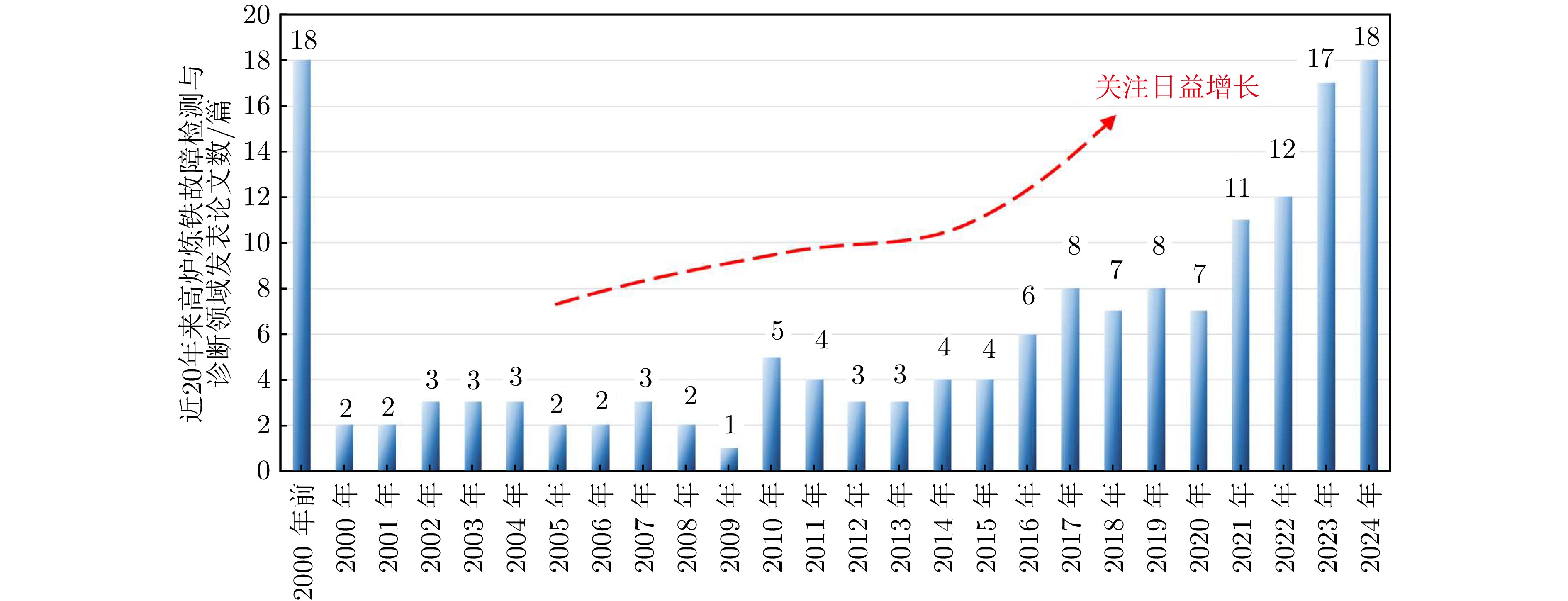
 下载:
下载:
